Each of the surveys and research themes selected in the 2014 Kyoto Creative Research Project is aimed at achieving unknown results. We will introduce the situation at the site!
Kyoto Creative Research Project 2014 Survey and Research Themes ![]()
Rough Roundtable Meeting between Kyoto Companies and International Students –
Designated Project 3 "Analysis of Employment Trends of International Students After University and Research on Support Measures at Local Governments, Companies, and Universities"
On the evening of February 3, when the research was finally in full swing, a research group led by Professor Kazuhiko Ishihara of the Ritsumeikan University Career Center, who is conducting research, held a rough meeting to deepen mutual understanding between international students and Kyoto companies before job hunting.
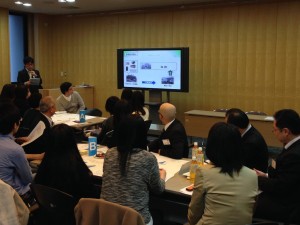
At this roundtable discussion, which was attended by 7 Kyoto companies and 25 international students, they were divided into groups and discussed the theme of "Why companies hire international students and what companies do international students want to work for?"
In the rough atmosphere, Kyoto companies expressed their expectations for international students to play a role as a bridge for vitality and overseas expansion, and international students expressed frank opinions about communication based on cultural differences and concerns about Japan's corporate culture.
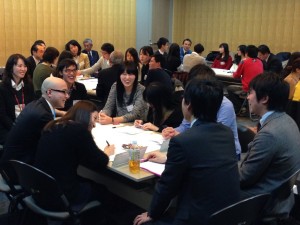
Through the results of this roundtable discussion and questionnaire survey, we plan to compile proposals on skill development programs for international students and Kyoto companies, and measures to improve the working environment for international students by Kyoto City.
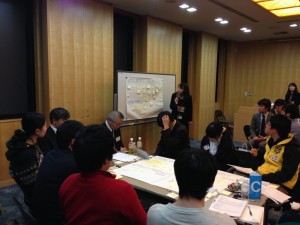
The University Consortium Kyoto has high hopes for research results that will benefit Kyoto companies, Kyoto universities, and Kyoto City!
Conducting Field Survey of Kyomachiya Gardens –
Continuing Theme "Impact of Residential Garden Environment and Reduction on Biota"
Akiko Niino and three other members of the seminar of Professor Shozo Shibata of the Graduate School of Agriculture, Kyoto University, who are conducting the research, are conducting a field survey of the gardens of Kyoto townhouses that are more than 100 years old in the Nishijin area.
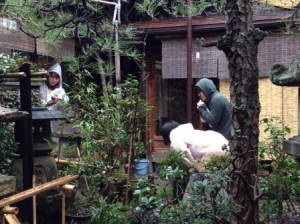
In order to clarify the relationship between the distribution of Kyomachiya and old residential gardens and the biota of birds, as part of a questionnaire survey of residents of houses with gardens in Kamigyo Ward's Momozono School District, Mr. Niino led the survey of the gardens of Kyomachiya in addition to interviews with residents.
On Thursday, December 4, the survey was conducted in a light rain.
We carefully listen to the plants in the garden, the types of birds that fly, the care of the garden, etc., and drop them into a diagram.
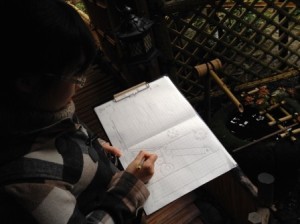
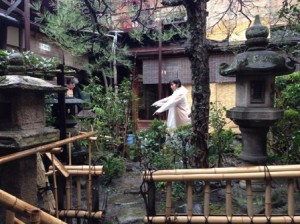
There are things that you can't understand unless you see the site, and Mr. Niino is energetically working on creating new developments by seeing them. This research, which focuses on the spatial distribution of Kyomachiya gardens and the creatures that inhabit them, is unprecedented, and I am looking forward to the results.
Implementation of a collaboration project with Chukyo Machibito Café –
Designated Issue 2 "Creating a place for exchange in the central urban area"
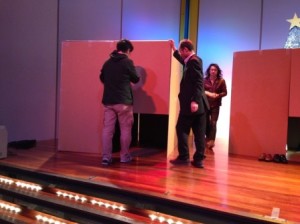
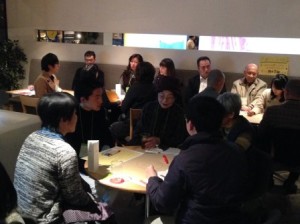
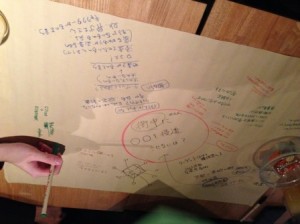
Further trials of the Charonsan Project will continue to create a place where the ideas that jump out from the participants become threads that will weave the future of commerce in Kyoto.
Conducting a Clinical Survey of Municipal Housing –
Free Theme 1 "Spatial Composition and Transition in Municipal Housing and Surrounding Residential Areas in the Suburbs of Kyoto City"
In this survey and research theme, in cooperation with the Kyoto City Housing Development Division, we are trying to clarify the relationship between municipal housing in the suburbs and the surrounding area among the 99 municipal housing complexes in the city, based on (1) the appearance of the building that borders the housing complex, (2) the use of the open space in the housing complex, and (3) the situation of the site boundaries. It is expected that the survey results will be utilized in the future development and reorganization of municipal housing.
On Wednesday, September 17, the principal investigator, Tetsuya Masaki, a doctoral student at the Graduate School of Kyoto Institute of Technology, conducted his third on-site survey of municipal housing in Yamashina Ward. (The past two sessions were held in Yamashina Ward and Fushimi Ward in August)
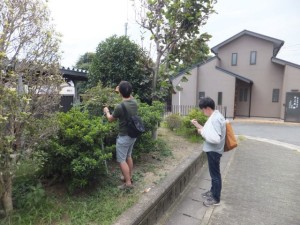
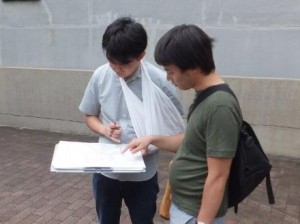
In order to clarify the relationship between municipal housing and the surrounding area, we take photographs of the boundary between the local municipal housing site and the road and the rinsite, and carefully record the dimensions and width of the adjacent road.
We will also check the state of the open space on the site and the status of entrances and exits outside the site.
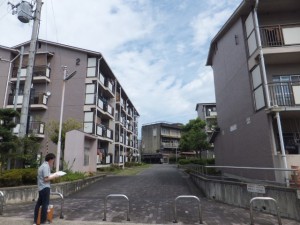
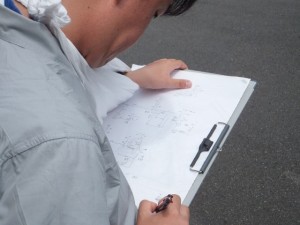
By analyzing the results of these surveys at multiple municipal housing complexes and materials on the transition of municipal housing, and deciphering what characteristics are observed in the local environment around municipal housing, it will be useful for considering the consolidation of municipal housing stock in the future. In fact, this kind of survey results have never been possible before.
Experiments for creating the future start with the tea room –
Designated Project 2 "Creating a place for interaction in the inner city area"
In this survey and research theme, we will conduct empirical research to foster and form networks of merchants, businesses, and citizens who promote the rediscovery and creation of "regional value" through "creating a place for exchange" that utilizes the attractiveness of local resources accumulated in the city center.
On the evening of Wednesday, August 27, a research group led by Professor Masanobu Nishimura of the Graduate School of Industrial Sciences of Kyoto Institute of Technology in collaboration with the Kyoto City Commercial Promotion Division conducted a demonstration experiment on the development of merchants and citizens and the formation of networks by creating opportunities for exchange.
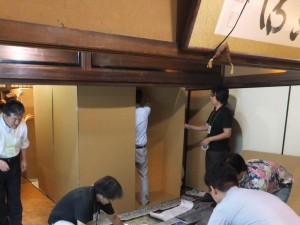
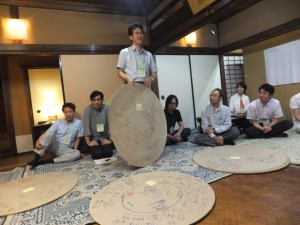
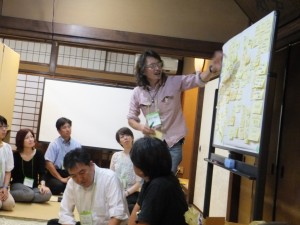
In the "Future Session," which was held with the surprising device of creating a cardboard tea room in a townhouse built more than 100 years ago, participants from various attributes such as local merchants exchanged ideas necessary for creating the future of the town with their eyes shining.
Based on these, various entities such as merchants, businesses, citizens, and artists will connect and create a "place" for creation. In a few years, the city may look completely different from what it is now.
Kyoto Creative Research Project 2014 Survey and Research Themes ![]()
Contact us
Consortium of Universities Kyoto Think Tank Project
TEL 075-708-5803 FAX 075-353-9101
〒600-8216 Campus Plaza Kyoto, Shimogyo-ku, Kyoto
, Shiokoji-dori ※Reception hours: Tuesday ~ Saturday 9:00~17:00 (excluding year-end and New Year holidays)















